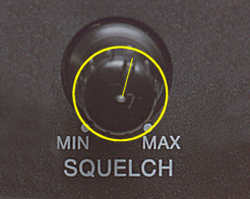Last week, I was called into a church to resolve a wireless microphone problem.
Over the phone, it sounded like an easy fix. Once I got there, that’s when the real trouble started.
“If I can re-create the problem then I can fix the problem.” Those are the words I’ve used throughout my life. Whether it was a computer problem, electrical problem, or audio problem, if I could re-create the problem, I could fix it.
It comes down to this; when you can recreate the problem, you can analyze the components and track down the source of the problem. Find the source and you’re right around the corner from a solution.
Talking with the guy at the church, he explained they were having interference with one of the microphones. Please note, this church is very close to the interstate and a huge truck stop. CB (citizen’s band radio) interference was likely.
I checked all of their wireless microphones for the frequency ranges they used. Everything was in the UHF (Ultra High frequency) range – nothing in which CB radios should interfere.
Next, I took to verifying all wireless microphones were on different channels. I had expected if that was the case, two channels would be picking up the same microphone and not getting interference. It was only at this point I decide we should turn on all of the wireless microphones and their appropriate mixer channels. Having a paper chart of the wireless microphones and frequencies was a good place to start so that I knew what I had in the room.
All of the systems were active for about 20 minutes with zero interference. Then, I walked up to the stage and knelt down by the receiver units and the house loudspeakers started emitting a painful sound. I looked at the receiver units and one had the clip light flashing. I moved back and it stopped. I moved in again and the awful sound started again. So I squelched it.
Squelch
A definition of squelch is, according to the Merriam-Webster dictionary, “to completely suppress.” By suppressing or stopping a sound, you aren’t giving it any volume in your house loudspeakers.
Wireless receivers have the ability to squelch sound as well. Imagine a squelch circuit which acts much like a noise gate. If the signal level of the radio frequency is below a certain amount, the gate stays closed and nothing gets passed to the mixer channel. When the signal is strong enough, the signal is passed along. At this point, the squelch circuit is keeping background noise from being passed to your channel.
But what about interference? Is there a way to squelch that? In short, yes.
The folks at Audio-Technica describe it like this:
“Interference complicates the [squelch circuit] situation considerably. Interfering signals can trick the receiver into un-muting the audio output, especially when the wireless transmitter is turned off. One approach to this problem is to make the squelch point adjustable. Often a squelch setting can be found that will un-mute the receiver when the strong transmitter signal is received, but not when only the weaker interfering signal is present. Unfortunately, a high or “tight” squelch setting usually will also reduce the maximum range of the wireless system. This is because the transmitter must be relatively close in order to deliver the necessary strong signal to the receiver.”





















